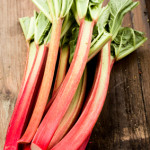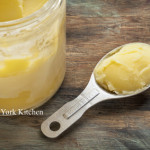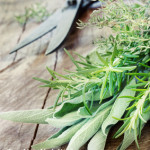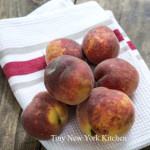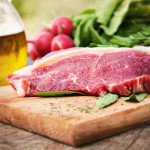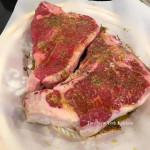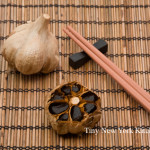Care & Handling Of Berries
Strawberries: Pick strawberries at their peak of ripeness. Look for symmetrically shaped berries; a brilliant sheen and rich even red color; fresh unwilted green caps; avoid strawberries with seedy tips or white shoulders. A white “core” in your strawberries is not an indication of ripeness. The internal pigment of strawberries ranges from white to bright red and is a characteristic of the berry plant variety and not of the berries’ ripeness or flavor.
Raspberries: When choosing raspberries look for plump, evenly colored berries that have a soft and hazy gloss and are free of dents and bruises. Raspberries have tiny hairs on them called “styles.” These are a completely natural part of the fruit’s defense mechanism and do not affect the taste or ripeness of the berries.
Blueberries: Choose blueberries that are dry, plump, round and free of dents and bruises. Blueberries should have a soft , hazy white coating, which is called “bloom.” Bloom is a completely natural part of the berries’ defense mechanism and helps protect them from the harsh rays of the sun. Avoid blueberries that are shriveled or lack bloom.
Blackberries: Look for deep, evenly colored blackberries with a nice sheen. Berries that are plump and dry and free of dents or bruises. Blackberries range in color from deep blue/purple to deep purple/black. Blackberries are often two-tone in color, which is perfectly natural and does not affect ripeness.
All fresh berries are highly perishable and should be refrigerated at all times until eaten or used as an ingredient. Refrigeration will extend freshness and shelf life.
It is recommended that you wash all berries before using them. However, you should never wash your berries until just before you are ready to eat or use them, as the moisture will decrease their shelf life.
Fresh berries can be easily frozen and enjoyed until you are ready to use them.
Wash strawberries carefully in cold water and pat dry. Remove the stems and any soft spots. Pack the berries into freezable containers or freeze them on a baking sheet and then pack them into containers as soon as they are frozen. Seal containers and keep frozen until you are ready to use them.
Raspberries and blackberries are very fragile and fresh raspberries are very sensitive to freeze damage. To freeze raspberries and blackberries rinse them gently in cool water then allow them to dry in a colander or on paper towels. Place a sheet of wax paper on a baking sheet then place berries in freezer. After berries are frozen, pack them into sealed containers until you are ready to use them. By freezing the berries this way, they won’t stick to each other which allows you to easily measure out the needed amount once you are ready to use them.
If you plan to freeze your blueberries, do not wash them before freezing as doing so will make the blueberry skins tough. Instead pack your blueberries into freezable containers, or freeze them on a baking sheet and then pack the into containers as soon as they are frozen. Seal the container and keep frozen until you are ready to use them. Be sure to wash the thawed blueberries prior to use.
Berries are delicious, nutritious, disease-fighting fruits. With their high antioxidant levels, berries are also considered “superfoods” because their health benefits may help the body fight off disease and slow the effect of aging. Berries are also high in vitamins and low in calories so they are a perfect fruit to include in your daily diet.
Antioxidants are natural substances found in plants, which are known, to aide in the prevention of heart disease, cancer and strokes. They provide protection by neutralizing free radicals, which are substances that form when oxygen is burned by the body. Free radicals travel through cells, disrupting the structure of other molecules, causing cellular damage. This cell damage is believed to contribute to aging and various health problems. In addition to boosting your immune system, antioxidants have been found to slow the effects of aging by improving memory, balance, coordination and motor skills. Berries are some o the most delicious and powerful disease-fighting foods available. Considered “superfoods,” antioxidant levels in berries are measured by their ORAC (Oxygen Radical Absorbance Capacity) Value.
“Work With What You Got!”
© Victoria Hart Glavin Tiny New York Kitchen © 2016 All Rights Reserved
How To Clarify Butter
Some recipes call for clarified butter. To make it, just melt butter over a medium-low heat until the milk solids separate and rise to the top, 3 to 5 minutes. Let cool, then skim off the white foam and discard. Spoon remaining clarified (clear) butter into a bowl; discard the solids left at the bottom of the pan.
“Work With What You Got!”
© Victoria Hart Glavin Tiny New York Kitchen © 2016 All Rights Reserved
Freezing Fresh Herbs
Spring is here and it’s time to grow a variety of herbs, but what do you do when you have an abundance that you don’t want to go to waste? The answer is to freeze them. To freeze hardy herbs like thyme or rosemary, chop the leaves and put them in an ice cube tray. Cover with olive oil and freeze them for up to 6 months. When you’re ready to use them just melt as many as you need in a skillet and use for sautéing.
“Work With What You Got!”
© Victoria Hart Glavin Tiny New York Kitchen © 2016 All Rights Reserved
Because peaches can grow in most of the United States, as long as they’re in season (May through early October) chances are you’ll be able to find organic peaches near you. Look for peaches with flesh that yields slightly to subtle pressure without bruising. Another good indicator of ripeness is the fruit’s background color, behind the red highlights. For yellow peaches (the more tart variety), the background should be a deep gold; for milder white peaches, give them a sniff – they should have a rich, sweet fragrance.
“Work With What You Got!
© Victoria Hart Glavin Tiny New York Kitchen © 2016 All Rights Reserved
Tips For Cooking Grass-Fed Beef
Many of us are eating grass-fed beef as a healthier choice. Grass-fed beef is a leaner choice and has a more favorable ration of omega fatty acids.
Preserving moisture and enhancing the flavor are easy to do. For tender steaks, marinate 4 to 6 hours before cooking. For juicy burgers, add chopped onions or other vegetables to the mix.
Turn down the heat to avoid overcooking. Forget well done. For steaks, stick with medium or medium-rare.
“Work With What You Got!”
© Victoria Hart Glavin Tiny New York Kitchen © 2016 All Rights Reserved
Now That I Have These Beautiful Butcher Shop Steaks I Am About To Put Them On The Grill. Before I Grill Them, However, I Let Them Sit Out For 1 Hour On A Platter So That They Come To Room Temperature. I Drizzle Them With Olive Oil And Sprinkle With A Favorite All-Purpose Spice Mixture That I Created. These Are Thick Steaks So They’ll Cook On The Grill 7 To 10 Minutes Per Side.
“Work With What You Got!”
© Victoria Hart Glavin Tiny New York Kitchen © 2016 All Rights Reserved
In the old days, buttermilk was what was left in the butter churn. Nowadays, it’s manufactured with healthy bacteria much like yogurt. Buttermilk is made with very little fat or none at all. Either way, it adds a nice fresh tang and texture to baked goods. In the summer it’s nice to purée peaches with a little sugar, add buttermilk, and freeze in an ice cream maker to create a healthy low-fat homemade version of frozen yogurt. Buttermilk will keep for several weeks in the coldest part of your refrigerator.
“Work With What You Got!”
© Victoria Hart Glavin Tiny New York Kitchen © 2016 All Rights Reserved
Black Garlic
Black Garlic has been around for quite awhile and is an ingredient that chefs have been using across the country. Think of it as “sweet meets savory.” Black garlic is made when heads of garlic are aged under very specialized conditions until the cloves turn black and have a sticky date-like texture. The taste is delicious and unique with a sweet and earthy umami flavor that intensifies nearly any dish you’re creating.
Garlic bulbs are kept for weeks at low temperatures in a humid environment. The enzymes that give fresh garlic its sharpness break down. These conditions also facilitate the Maillard reaction, the chemical process that produces wild new flavor compounds responsible for the deep taste of seared meat and fried onions.
Black garlic’s flavor is described as tasting like aged balsamic, prunes, licorice, molasses, caramel, and tamarind. Use the cloves as you would roasted garlic. Purée with olive oil for a dense and sweet flavor all its own that compliments steaks, chicken, fish and seafood. Smear the paste on crostini or incorporate it into dressings. Use in a braise to intensify the umami-rich flavor of spare ribs. Add to soups, risotto, noodle and rice dishes, and cheese dips. Black garlic also pairs well with blue cheese.
Black garlic also comes in a dehydrated powder that is considered an umami pixie dust. Just sprinkle a bit of it on anything that begs for depth and earthiness.
Most likely you won’t find black garlic at your local neighborhood market, but some Whole Foods will carry it. I’m lucky enough to get mine at Kalustyan’s in New York City. You can certainly get it online at Amazon or other specialty online food sources.
“Work With What You Got!”
© Victoria Hart Glavin Tiny New York Kitchen © 2016 All Rights Reserved
Homemade Fruit & Vegetable Wash
I’ve made the mistake of buying premade produce wash and have spent way too much money to find out that many of them don’t really work that well. It’s easy to make your own and you’ll save plenty of money as well. You’ll just need to invest in a decent spray bottle.
INGREDIENTS
1 Cup Water
1/4 Cup White Vinegar
3 Tablespoons Lemon Juice
Pour into spray bottle and use by spraying produce, wipe thoroughly, and rinse. It’s that easy!
Makes About 1 1/4 Cups
“Work With What You Got!”
© Victoria Hart Glavin Tiny New York Kitchen © 2016 All Rights Reserved


